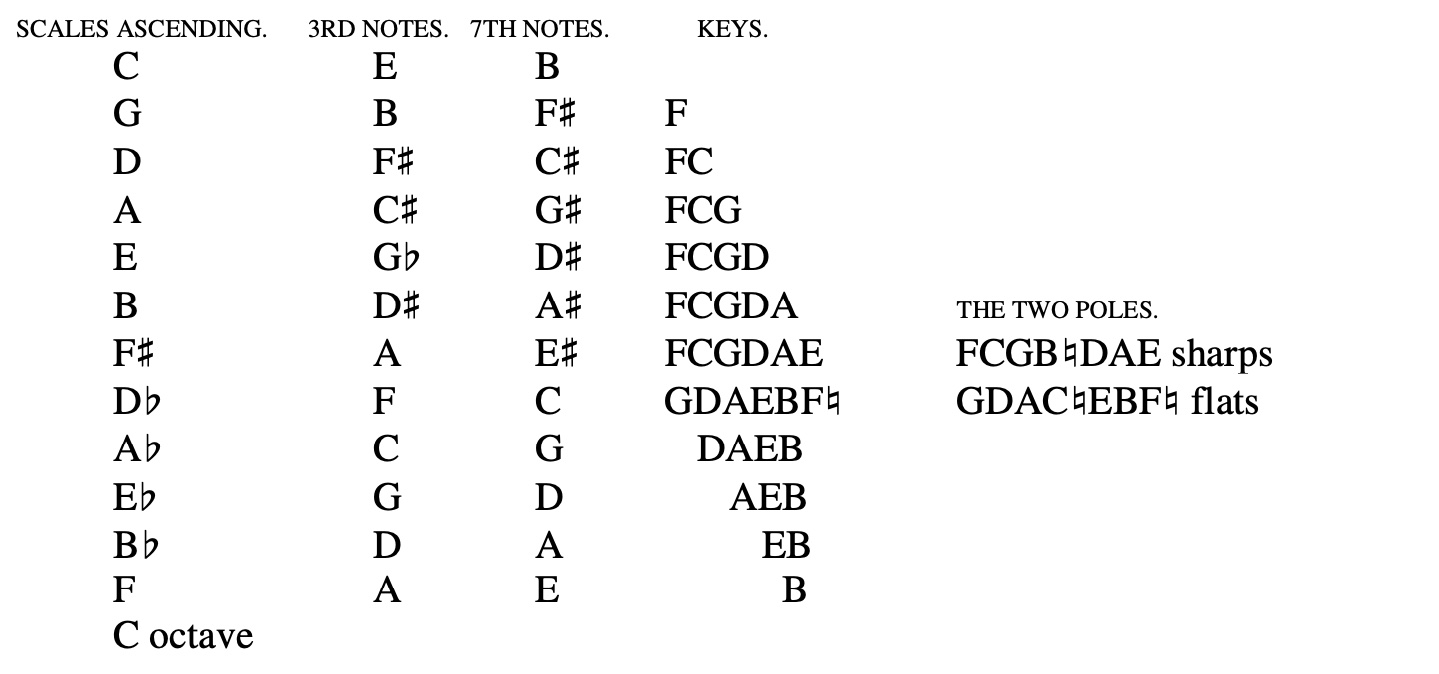may be traced in the same way on the table; the third and seventh notes meeting, ascending and descending, sounding one harmony.

Finally, trace the twelve keys by fifths as they veer round through the seven circles, each circle representing the eighteen tones. Beginning with C in the innermost circle ascending, C becomes the root of G, G of D, and so on. In descending, begin with C in the outermost circle (though really the first of a higher series which we have not the power of striking on instruments); F, its root, becomes the key-note, B? the root and then the key-note, and so on. The keys thus gained are written in musical clef below.
The keys of C and G meeting are coloured, and show the beautiful results of colours arising from gradual progression when meeting by fifths. Each key-note and its trinities have been traced as complete in itself, and all knit into each other, the seven of each rising a tone and developing seven times through seven octaves, the keys mingled. The twelve scales have been traced, developing seven times through seven octaves, all knit into each other and into the key-notes and their trinities. The chords have also been traced, each complete in itself, and all knit into each other and into the key-notes, trinities, and scales. And lastly, one series of the twelve keys, no longer mingled, but modulating into each other, have been traced, closely linked into each other by fifths through seven octaves, three keys always meeting. Mark the number of notes thus linked together, and endeavour to imagine this number of tones meeting from the various notes.

We pass on to the developing of the minor keys.
See Also
eighth meeting
meeting by fifths
meeting of fifths
meetings by fifths
proximate meetings
table of the twelve scales meeting by fifths
The 12 Major Keys Meeting by Fifths
The Minor Gamut Modulating in the Meeting of Fifths61
The twelve keys meeting by fifths
The Twelve Scales Meeting by Fifths
